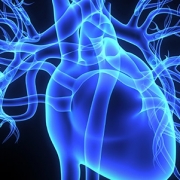The mysterious rise of hepatitis: Could genes be to blame?
An unexpected virus and genomic variant combination has been linked to a rise in hepatitis cases in children
Results of two independent studies undertaken by University College London (UCL) and the University of Glasgow have shown a link between hepatitis cases in the UK, a virus called adeno-associated virus 2 (AAV2) and variants in a specific group of genes. These findings could help explain an unexpected increase in acute (sudden onset) hepatitis cases in the UK, predominantly in children ages 10 or under, that cannot be attributed to the normal causes of the disease. This phenomenon was first recorded in January 2022.
Hepatitis in 2022
Hepatitis is the term used to describe an inflammation of the liver, and is usually caused by viral infection (hepatitis viruses A to E) or alcohol abuse.
According to the World Health Organization, as of July 2022 over 270 unexpected cases of hepatitis in children had been reported in the UK, of which 74 had required intensive care treatment and 12 had needed liver transplants. Internationally, at least 1,000 children have been affected.
Multiple theories have been put forward to try and explain why these cases are occurring. From the beginning, one of the main suspects has been adenoviruses: common viruses that are known to have spread rapidly in the UK after Covid-19 restrictions were lifted. Adenovirus infections can cause illnesses such as colds, sore throats, conjunctivitis and gastroenteritis, but they rarely cause healthy people to become seriously unwell.
While multiple studies have been looking for a link between hepatitis and adenoviruses, teams at UCL and the University of Glasgow have broadened the search, with some unexpected results.
What can the studies tell us?
The results of both the University of Glasgow and UCL studies show a link to AAV2, which is unexpected. Although the released findings are, at present, still preprints (research reports that have not been peer reviewed), the similarity in findings between two studies carried out independently is striking.
In both studies, researchers used DNA and RNA sequencing to look for traces of virus in blood and liver samples from children with unexplained hepatitis who had required liver transplants.
The University of Glasgow study compared samples from these affected children with samples from children with adenoviruses and healthy livers, as well as from children with other types of hepatitis. All the children with unexplained hepatitis had AAV2, which was not present in any of the children in the control groups.
The UCL study compared samples from the children with unexplained hepatitis with samples from both healthy and immunocompromised children. Nearly all the children with unexplained hepatitis had AAV2, compared to 6% of healthy children and one-third of immunocompromised children.
What are adeno-associated viruses?
Adeno-associated viruses (AAVs) are small viruses – so small, in fact, that they cannot make all the proteins they need to replicate, and therefore need to co-infect with another suitable virus whose machinery they hijack. The first viruses that AAVs were known to piggyback on in this way were adenoviruses, but it has since been discovered that they can co-infect with others, including herpes simplex, which causes cold sores.
AAVs have not previously been implicated in causing disease, and usually do not provoke a strong immune response. They are, in fact, one of the preferred vectors to deliver gene therapies, because they can enter cells unaided but cannot replicate without the presence of a ‘helper’ virus.
“Our data point to AAV2 in the liver and/or blood of cases as the strongest biomarker for the hepatitis,” said Professor Judith Breuer of UCL Great Ormond Street Institute of Child Health. “Additionally, the presence of HHV6 [human herpes virus 6] and adenovirus in the damaged livers removed from the five children who needed liver transplants raises questions as to the role of co-infections with these three viruses in the most severe cases.”
The role of genomics
As with the UCL study, the team at the University of Glasgow found strong evidence to suggest that AAV2 is at least partially responsible for the mysterious rise in hepatitis cases among children. The Glasgow team developed an additional line of investigation, however, by using next-generation sequencing (sometimes called massively parallel sequencing) to look for answers in the genomes of affected children. The results were clear: almost 90% had variants in the human leukocyte antigen (HLA) group of genes, compared to around 16% of the general population in Scotland.
The HLA complex is important in the regulation of the immune system, and it seems likely that children with this gene variant are more susceptible to developing hepatitis when AAV2 is present.
Both institutions have been keen to emphasise that more research is needed to explore these findings further; however, it appears that a clear link has been established between a variant in the HLA group of genes and the presence of AAV2, the combination of which compromises the immune system and makes affected children more likely to develop hepatitis.
–









